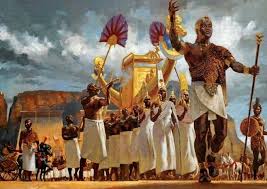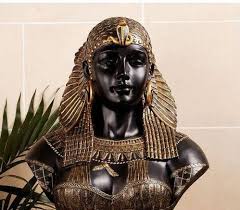Located in what is now Sudan, south of Egypt along the Nile River, was the Kush civilization, one of the most potent and long-lasting ancient African civilizations. Kush gained notoriety as a commercial empire and cultural link between Africa and the Mediterranean region during its more than a millennium-long reign. This article investigates the beginnings, nature, and enduring impact of the Kushite civilization.
The Kush Civilization’s beginnings.
The Kingdom of Kush, formerly known as Nubia, began to flourish as a separate civilization about 2000 BCE, but, the fall of Egypt’s New Kingdom in 1070 BCE marked the beginning of its most important period of dominance. Kush, located in the Nubia region, was positioned next to the lush banks of the Nile River, which offered abundant resources for trade and cultivation. Control over gold mines and a key location as a trading gateway linking sub-Saharan Africa with the Mediterranean and the Middle East contributed to Kush’s early wealth.

Generally speaking, Kushite history is split into three periods: the Meroitic Period (300 BCE–350 CE), the Napatan Period (1000–300 BCE), and the Kerma Period (2500–1500 BCE). These eras show how the Kush civilization changed from a strong empire to one that subjugated Egypt and eventually made Meroë its capital. (Lobban, R. A. (2003). Historical Dictionary of Ancient and Medieval Nubia. Scarecrow Press.)
The Kushites: Who Were They?
Kush’s inhabitants were expert traders, builders, and fighters. They created a unique culture that preserved its uniqueness even as it was impacted by its proximity to Egypt. The gods worshiped by the Kushites were comparable to those of the Egyptians, but they also had their pantheon of gods, such as the lion-headed god of war known as Apedemak. To house their kings and nobles, they constructed magnificent pyramids that were smaller and steeper than those found in Egypt.
Due to the Kushites’ reputation for skill in iron smelting, the kingdom was among the first in Africa to develop iron implements and weaponry, which bolstered their military might. They were also expert craftspeople, creating intricate jewelry, architecture, and pottery.
When King Piye’s Kushites overthrew Egypt in the eighth century BCE, Kush achieved its pinnacle of dominance during the Napatan Period. The Kush rulers ruled as pharaohs over both Kush and Egypt during this time, which is known as the Kushite Dynasty or the 25th Dynasty of Egypt. The Kushite pharaohs aimed to revive Egypt’s historic customs, and their rule is renowned for important construction endeavors, including the construction of temples and monuments, as well as the resurgence of Egyptian art and culture.
Where are they?
As a result of internal strife and outside influences, the Kushite Empire started to lose strength in the fourth century CE. Ultimately, with the establishment of the strong Kingdom of Aksum in present-day Ethiopia, ultimately caused Kush to fall, in 350 CE. Nonetheless, Kush’s influence may still be seen in the local language, artwork, and culture.
Currently thought to be the descendants of the ancient Kushites, the Nubian people are mostly found in southern Egypt and Sudan. Numerous ancient sites, such as the city of Meroë, which is currently a UNESCO World Heritage Site, may be found in the area that was previously governed by the Kushites. More than 200 pyramid remnants may be found in Meroë, offering important new perspectives on the opulence of Kushite culture.
The Kush Civilization’s Legacy.
A substantial legacy of the Kushites has shaped both African and global history. They became a significant political force in antiquity when they ruled over Egypt during the 25th Dynasty. Their accomplishments in trade, architecture, and ironworking also influenced the rise of African civilizations. The brilliance of Kushite culture is demonstrated by the pyramids of Meroë and other architectural wonders.
Kush is one of the major African empires important to ancient history, and researchers and archaeologists are still studying it. Many Africans take great pleasure in the Kushites’ heritage, which continues to captivate historians and archaeologists around the globe. (Török, László. (2009). Between Two Worlds: The Frontier Region Between Ancient Nubia and Egypt 3700 BC-AD 500. Brill.)
Originating in the ancient kingdom of Nubia, the Kush civilization was a major player in the history of both Africa and the Mediterranean. The Kushites emerged as Egypt’s dominant force from their early days as a regional force, leaving behind a legacy of artistic and technological accomplishments that still stand today. Even though the kingdom finally fell, the Kush people’s history is still a crucial part of the tale of ancient African civilizations, and they still have an impact on the area.

